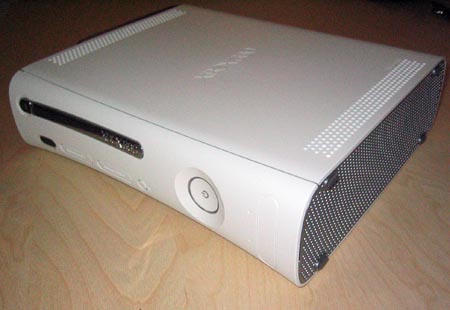Inside Microsoft's Xbox 360
by Anand Lal Shimpi, Kristopher Kubicki & Tuan Nguyen on November 16, 2005 5:09 AM EST- Posted in
- Systems
What's in the Box, in the Box? (Taking it Apart)
Microsoft has shown the world that it's very swift when it comes to recovering from errors that it has made. With the original Xbox design, Microsoft was definitely testing new ground and thus had little experience when it came to protecting its intellectual property and hardware. The original Xbox was largely easy to open by most people with the most common of tools and was quickly adopted by the modding community as the ultimate "utility" console.
In an attempt to circumvent those with modified Xboxes, Microsoft added security and authentication features to its Xbox Live service that would detect whether an Xbox was in its original form or not. But the mod community did not sit idle and not long after, mod chips were introduced that were able to switch on and off between original BIOS mode and "modified" BIOS mode.
Microsoft has clearly announced to the public that it has designed the Xbox 360 from the ground up to thwart those who want to crack open the case -- even simply for a look inside. They have stated that the unit will be screwless (partially true) and be extremely difficult to disassemble -- unfortunately only partially true.
With a few simple tools we were able to disassemble the entire unit, removing every component from the system without any damage. If you plan to take apart your Xbox 360 -- and we must warn that doing so will void your warranty immediately -- the following tools are needed:
- Three torx screw drivers in the following sizes: T6, T7 and T12
- One small flat head screw driver or small and thin wedge
- A 2 inch long and thin (roughly 1.5mm thick) metal stick
- A 2 inch long and flat (less than 1mm thick) plastic or metal stick
- A pair of thin pliers
With those tools in hand, we're ready to disassemble the Xbox 360.











91 Comments
View All Comments
apriest - Wednesday, November 16, 2005 - link
HD gaming, but no DVI or HDMI?!! Shame, shame Microsoft...Coherence - Wednesday, November 16, 2005 - link
Agreed. I was very surprised to see that DVI/HDMI was left out of the first production run. My HDTV has all its component video inputs used up already, so it would have been nice to plug the 360 into one of the spare HDMI ports. I hate using switchboxes, but that's what I'll have to do with the component inputs now.glennpratt - Wednesday, November 16, 2005 - link
Does you HDTV have VGA? Thier is a VGA out.apriest - Thursday, November 17, 2005 - link
VGA (analog) isn't nearly the quality of DVI (digital), though it would be better than component.JarredWalton - Wednesday, November 16, 2005 - link
My Toshiba HDTV has an HDMI port (no DVI, but a DVI to HDMI cable works). However, it also has two component inputs, and that's far more common than DVI, HDMI, or VGA inputs on HDTVs.cruzer - Wednesday, November 16, 2005 - link
Very slick design, looking forward to getting one!!cruzer - Wednesday, November 16, 2005 - link
On page 5, "two dice on the chip", should that be 'dies' instead of 'dice'?cruzer - Wednesday, November 16, 2005 - link
Nevermind, dice is correct.apriest - Wednesday, November 16, 2005 - link
I was wondering that myself until I looked it up!bldckstark - Wednesday, November 16, 2005 - link
Two dies as in tooling dies, are not referred to as dice. Dies is the correct word. The same applies to computer mouses. The plural for computer mouse is not computer mice, but computer mouses. Mice is a group of more than one animal, not more than one tool. I have thousands of dies here at work, and have worked around millions of dies, never once has anyone even suggested the use of the word dice for them.From dictionary.com -->
die2 pl. dies or dice (ds)
1. pl. dies - A device used for cutting out, forming, or stamping material, especially:
1. An engraved metal piece used for impressing a design onto a softer metal, as in coining money.
2. One of several component pieces that are fitted into a diestock to cut threads on screws or bolts.
3. A part on a machine that punches shaped holes in, cuts, or forms sheet metal, cardboard, or other stock.
4. A metal block containing small conical holes through which plastic, metal, or other ductile material is extruded or drawn.
2. pl. dies Architecture. The dado of a pedestal, especially when cube-shaped.
3. pl. dice
1. A small cube marked on each side with from one to six dots, usually used in pairs in gambling and in various other games.
2. dice (used with a sing. verb) A game of chance using dice.
tr.v. died, die·ing, dies
To cut, form, or stamp with or as if with a die.
I don't care if AT gets it right or not as long as I can understand what they mean, but if we are going to discuss it, let's make sure we are correct.